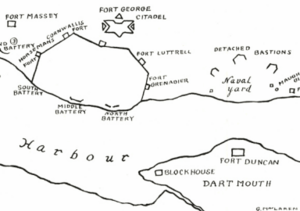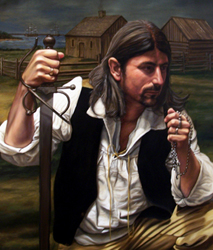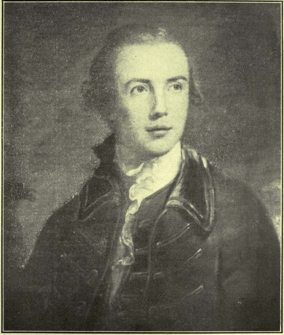Raid on Dartmouth (1751) facts for kids
Quick facts for kids Raid on Dartmouth |
|||||||
|---|---|---|---|---|---|---|---|
| Part of Father Le Loutre's War | |||||||
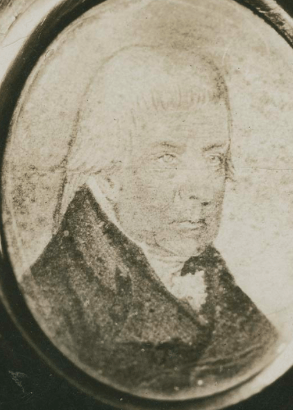 John George Pyke, Only image of survivor of the Raid on Dartmouth (1751) |
|||||||
|
|||||||
| Belligerents | |||||||
| Mi'kmaq militia Acadian militia |
|||||||
| Commanders and leaders | |||||||
| Joseph Broussard (Beausoleil) | Captain William Clapham Lt. Clark, Warburton's Regiment (wounded) Sgt. ?, 45th Regiment † Superior officer ?, 45th Regiment † Captain Thomas Stannard (taken prisoner) |
||||||
| Strength | |||||||
| 60 Acadian and Mi'kmaq | 60 British regulars and rangers | ||||||
| Casualties and losses | |||||||
| disputed: Cornwallis: 6 Mi'kmaq Salusbury: one or two Mi'kmaq |
disputed: Cornwallis: 4 killed; 6 prisoners; Wilson's journal: 15 killed, 7 wounded (3 die in hospital), 6 prisoners; Salusbury journal: 20 killed; London Magazine: 8 settlers and a few officers killed, 14 prisoners |
||||||
The Raid on Dartmouth (also referred to as the Dartmouth Massacre) occurred during Father Le Loutre's War on May 13, 1751, when a Miꞌkmaq and Acadian militia from Chignecto, under the command of Acadian Joseph Broussard, raided Dartmouth, Nova Scotia, destroying the town and killing twenty British villagers and wounding British regulars. The town was protected by a blockhouse on Blockhouse Hill (close to the corner of King St. and North St.) with William Clapham's Rangers and British regulars from the 45th Regiment of Foot. This raid was one of seven the Natives and Acadians would conduct against the town during the war.
Contents
Historical context
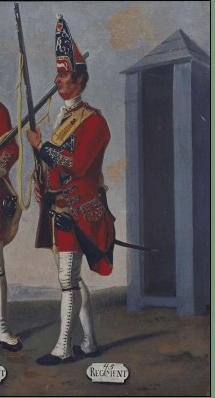
After the British Conquest of Acadia in 1710, the British laid claim to all of peninsular Acadia, renaming it Nova Scotia. Its population was primarily Catholic French Acadians and the Miꞌkmaq indigenous peoples. In response to British settlement, the Miꞌkmaq raided the early British settlements of present-day Shelburne (1715) and Canso (1720), prior to entering into a Peace and Friendship Treaty with the British in 1726.
A generation later, Father Le Loutre's War began when Edward Cornwallis arrived to establish Halifax with 13 transports on June 21, 1749. By the time Cornwallis had arrived in Halifax, there was a long history of the Wabanaki Confederacy (which included the Mi'kmaq) warfare against British civilians along the New England/ Acadia border in Maine (See the Northeast Coast Campaigns 1688, 1703, 1723, 1724, 1745, 1746, 1747).
The British quickly began to build other settlements. To guard against Mi'kmaq, Acadian and French attacks on the new Protestant settlements, British fortifications were erected in Halifax (Citadel Hill) (1749), Bedford (Fort Sackville) (1749), Dartmouth (1750), Lunenburg (1753) and Lawrencetown (1754). There were numerous Mi'kmaq and Acadian raids on these villages such as the Raid on Dartmouth (1751).
There was a raid on those in the Dartmouth area in 1749. In response to the raid, Governor Edward Cornwallis issued an extirpation proclamation against the Miꞌkmaq on peninsular Nova Scotia and those that supported them. To carry out this task, two companies of rangers were raised, one led by Captain Francis Bartelo and the other by Captain William Clapham. These two companies served alongside that of John Gorham's company. The three companies scoured the land around Halifax unsuccessfully looking for Mi'kmaq.
In July 1750, the Mi'kmaq killed seven men who were at work in Dartmouth. In August 1750, 353 people arrived on the ship Alderney and began the town of Dartmouth. The town was laid out in the autumn of that year. The following month, on September 30, 1750, Dartmouth was attacked again by the Miꞌkmaq and five more residents were killed. In October 1750 a group of about eight men went out "to take their diversion; and as they were fowling, they were attacked by the Indians, who took the whole prisoners ..."
In March 1751, the Mi'kmaq attacked on two more occasions, bringing the total number of raids to six in the previous two years.
The raid
Three months later, on May 13, 1751 before sunrise, Joseph Broussard led sixty Miꞌkmaq and Acadians to attack Dartmouth again, in what would be known as the "Dartmouth Massacre". The raiding party came down the Shuebenacadie River from Chignecto. Broussard and the others killed twenty settlers and more were taken prisoner. Captain William Clapham and sixty soldiers of Hugh Warburton's regiment were on duty and fired from the blockhouse, which was located at the point overlooking Dartmouth Cove. The raiding party tortured the sergeant and wounded three other soldiers.
Captain Alexander Murray along with about 40 soldiers left Halifax in three vessels and tried to track them down for miles but most of the raiding party had dispersed. The British reported they had killed six Mi'kmaq warriors. Those at a camp at Dartmouth Cove, led by John Wisdom, assisted the settlers. Upon returning to their camp the next day they found the Mi'kmaq had also raided their camp and taken a prisoner.
The British took what remained of the bodies to Halifax for burial in the Old Burying Ground. (John George Pyke survived the raid but his father John Abraham did not.)
Aftermath
The British retaliated by sending several armed companies to Chignecto. A few French defenders were killed and the dikes were breached. Hundreds of acres of crops were ruined which was disastrous for the Acadians and the French troops.
Immediately after the raid, a wooden palisade was erected around the town plot. Mi'kmaq and Acadian attacks continued throughout the French and Indian War which ended fourteen years after Dartmouth was first settled. (For example, in the spring of 1759, there was another attack on Fort Clarence, in which five soldiers were killed.) After the initial raid, no new settlers were placed in Dartmouth again for the next thirty years. Of the 383 settlers who arrived in Dartmouth on the Alderney in August 1750, only half remained two years later. By the end of war (1763), Dartmouth was only left with 78 settlers.
Similar raids happened in response to the British founding of Lawrencetown and Lunenburg, Nova Scotia, such as the Raid on Lunenburg (1756).
Fiction
Joseph Howe lived in Dartmouth and was well acquainted with its history. He included a Mi'kmaw raid on a British dwelling in his poem "Acadia". In the poem, Mi'kmaw fighters attack a British family of four in their house. Initially, the British family is able to defend themselves, killing five Mi'kmaw fighters. Eventually, however, the Mi'kmaw fighters are victorious and overwhelm the family, killing all those in the house.


